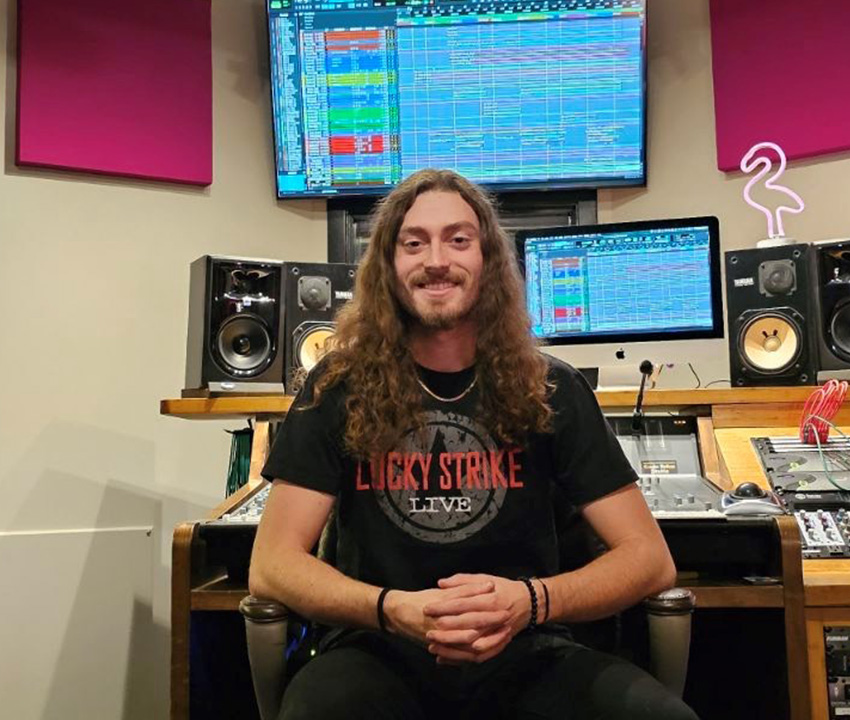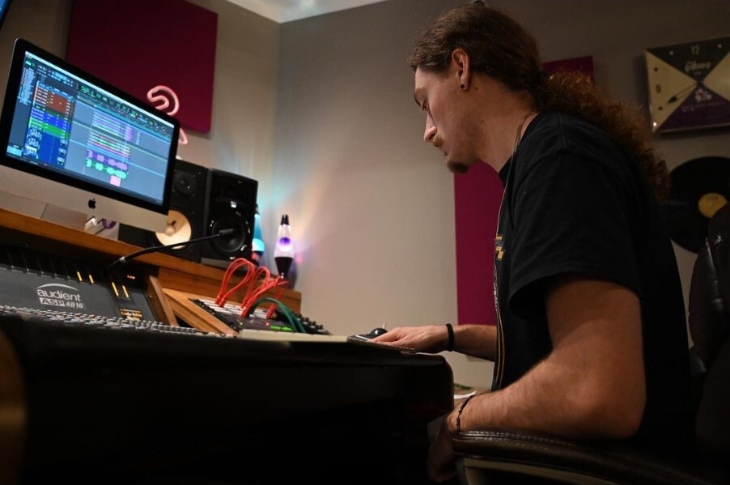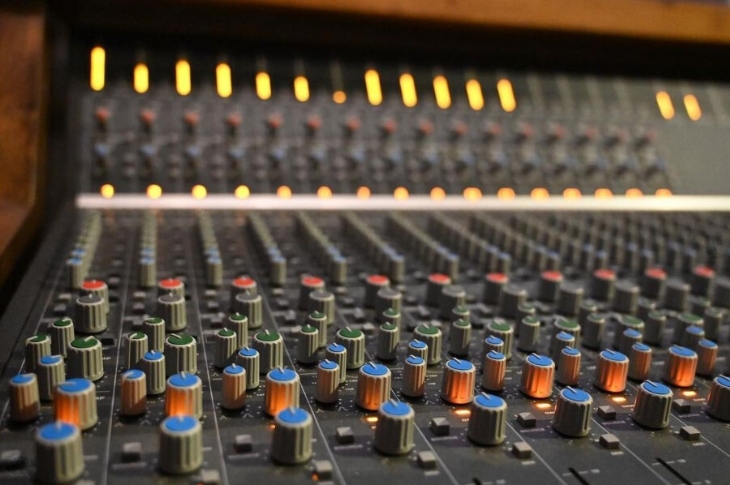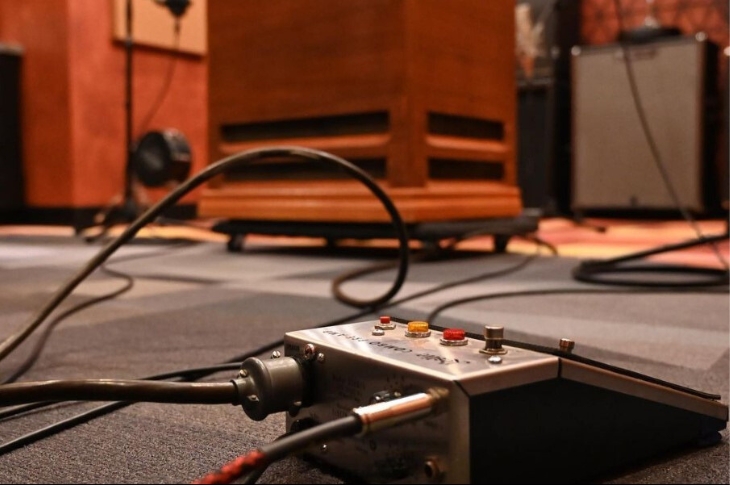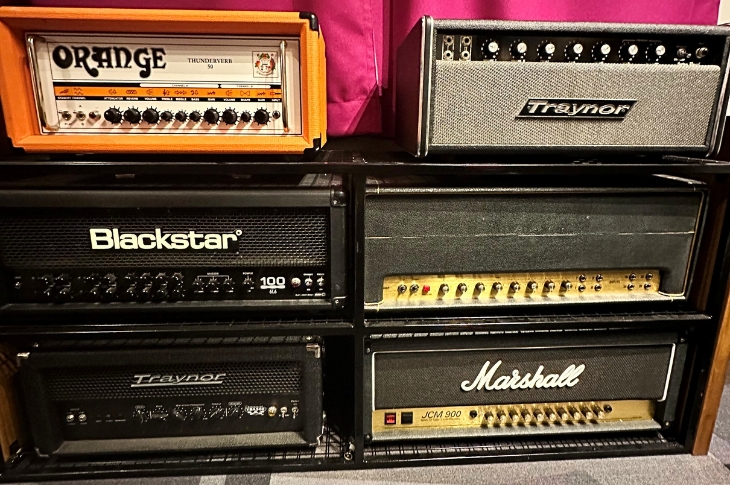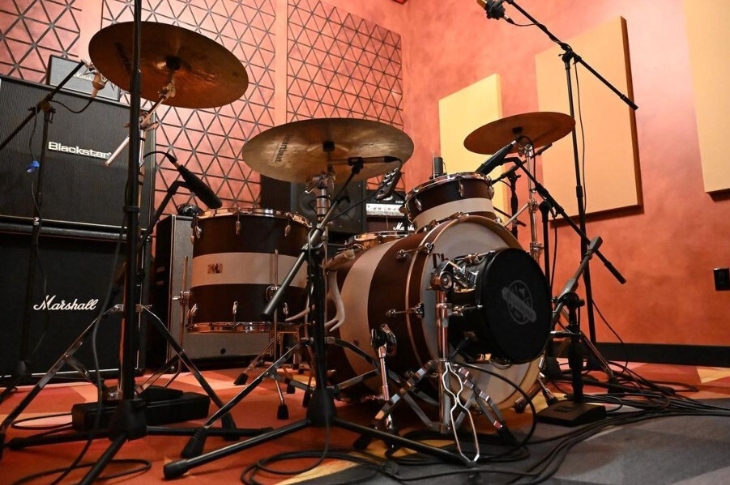Even though he had lofty creative aspirations, Emery wanted to approach his career in a practical way that would be sustainable over the long term. He was looking to diversify his experience so that he could work across different aspects of the music industry, which led him to the Broadcast Systems Technology program at SAIT.
When he completed the program in 2019, Emery went on to attend the Ontario Institute of Audio Recording Technology (OIART) to further his sound and music production education. After graduating, he headed out to gig with his band Prisoner around Canada and the U.S. Two years later, he returned to Calgary to set up a home base and embed himself in the city’s music community.
LINK Magazine sat down with Emery to talk about his multifaceted music career path and how he built his new indie recording space, Crooks Hollow Studio.
Tell me a bit about what went into building a recording studio?
ME: The place has created a foundation for me to pursue my own music but also create a headquarters for the music community to grow and build in the city. The studio was designed and built by myself with the help of family and friends. I’ve been working in commercial construction with my dad since I was big enough to push a broom, so I had the skills to build a space. There wasn’t a studio in Calgary that’s designed acoustically from the ground up, and we can record anything audio from music to foley and ADR (Automatic Dialog Replacement) to audiobooks.
What makes it unique and what can other musicians expect from recording there?
ME: Crooks Hollow is built using specific dimensions: the length, width and height are based on mathematical acoustic ratios. We used the room within a room concept, so there’s air space between the inner and outer walls and the floor is floating off the ground. All of this influences sound waves in a way that’s optimal for recording and mixing music. The studio is running one of the only Audient recording consoles in western Canada, and offers a plethora of unique vintage and rare equipment to bridge the gap between analog and digital recording.
How did recording systems and technology fit into your career plans as an artist?
ME: When I decided I wanted to take music seriously, I started doing as much research as I could on the music industry. I learned that being a professional guitar player is expensive. And signing with a record label is a risk: they promise you everything, but then they can control what you do creatively. I wanted to give myself more leverage in the industry by being an artist who could also manage all of the aspects of making music by myself, from production and recording to the business side. There isn’t a program that teaches all of it, so I kind of created my own four-year degree between SAIT and OIART.
Are there skills you developed at SAIT that you use in the work you’re doing today?
ME: The broadcast systems program was one of the best programs I could have taken. It taught me about low-voltage electronics and signal flow so that I could repair gear and instruments and set up systems for broadcasting. And it introduced me to acoustics and how sound works, not just in a broadcast environment, but how it works in the real world. That knowledge gave me a head-start in the program at OIART. I used what I’ve learned about acoustics to build the studio entirely with sound in mind. And because I have that understanding of signal flow, I was able to design and integrate a system designed for audio production.
Head inside the studio
Flip through the gallery and get a glimpse at some of the equipment inside Crooks Hollow Studio.

Oki, Âba wathtech, Danit'ada, Tawnshi, Hello.
SAIT is located on the traditional territories of the Niitsitapi (Blackfoot) and the people of Treaty 7 which includes the Siksika, the Piikani, the Kainai, the Tsuut’ina and the Îyârhe Nakoda of Bearspaw, Chiniki and Goodstoney.
We are situated in an area the Blackfoot tribes traditionally called Moh’kinsstis, where the Bow River meets the Elbow River. We now call it the city of Calgary, which is also home to the Métis Nation of Alberta.
